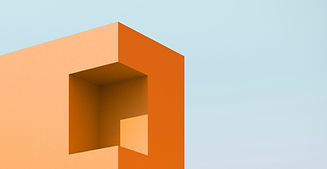
3D Printing
Unlike traditional NC machining that removes material by cutting, 3D printing builds shapes layer by layer, enabling production of complex geometries without tool interference. It offers faster turnaround and lower cost, making it a preferred option for designers.
Credel AM provides consulting and production services tailored to your functional and application needs.
SLA (Stereolithography) – Photopolymer Resin Printing
-
Smooth surface finish and high dimensional accuracy
-
Supports transparent and detailed models
-
Suitable for small to large objects
-
Tolerance: ±0.15 mm
-
Layer thickness: 0.05–0.15 mm
-
Minimum feature size: 0.2 mm (XY), 0.5 mm (Z)
-
Ideal for fluid flow analysis or internal structure visualization
SLS (Selective Laser Sintering)
-
Excellent heat resistance and durability
-
Suitable for functional parts
-
Nylon-based material, optional rubber/metal
-
Tolerance: ±0.20 mm
-
Layer thickness: 0.1 mm
-
Minimum feature size: 0.6 mm
-
Strong but rougher surface compared to SLA
HP MJF (Multi Jet Fusion)
-
Uses PA12 thermoplastics
-
Ideal for low-volume production with properties similar to injection-molded parts
-
High resolution, supports small details
-
Available in full color (MJF 580)
-
Tolerances: ±0.2 mm (MJF 4200), ±0.3 mm (MJF 580)

3D Scanning
3D scanning enables reverse engineering by capturing the shapes and surfaces of real-world objects. The scanned data can be compared with design data for inspection, quality control, and even restoration of damaged components. This process is widely used in mold production, product replication, and design validation.
Scanning Process
-
Prepare and fix the object for scanning (requirements vary based on scanner type and object geometry)
-
Use a 3D scanner to collect point cloud data representing the object’s surface
-
This raw data can directly produce parts, but cannot be modified until modeling is performed
Inspection (3D Data Comparison)
Inspection involves comparing scanned data with original CAD models to evaluate accuracy and quality. The results are visualized using color maps and detailed reports for decision-making in manufacturing and product refinement.
Inspection Workflow
-
Secure the product on the table
-
Perform multi-angle 3D scanning
-
Gather sufficient scan data
-
Align scan and CAD data
-
Perform deviation analysis using color mapping
Applications
-
Mold inspection and adjustment
-
Part inspection by material or batch
-
Design revision validation
-
Statistical analysis for quality assurance

NC Machining
NC (Numerical Control) machining uses subtractive techniques to manufacture precise components from materials such as aluminum, acrylic, ABS, and wood. It is ideal for producing functional parts, mechanical frames, prototypes, and structural models.
While it delivers high precision and excellent surface quality, NC machining can be limited by tool accessibility and is generally more expensive than 3D printing
Key Features
-
High-speed movement and spindle RPM
-
Materials: ABS, acrylic, PC, steel, aluminum, copper, wood
-
Tolerance: ±0.05 mm per 100 mm
-
Supports both light and heavy materials
Vacuum Casting
Vacuum casting is a rapid prototyping method that uses silicone molds to cast small series of parts using thermosetting resin. It offers high fidelity to the master model and excellent replication of complex geometries.
Benefits
-
Fast production of multiple copies from a master
-
Accurate reproduction due to low shrinkage
-
No need for slide molds, even for undercuts
-
Bubble-free casting due to vacuum environment
-
Insert parts (e.g. screws) can be embedded
-
Color customization and post-processing available (painting, printing)
Equipment Specs
-
Mold size: up to 750 x 950 x 750 mm
-
Casting volume: 2.2 L
-
Vacuum level: 0.5 mbar
-
Max production: 5 copies per mold
-
Tolerance: ±0.3 mm per 100 mm
-
Material options: Rubber-like, ABS-like, PP-like, transparent, heat-resistant, wax, nylon




















